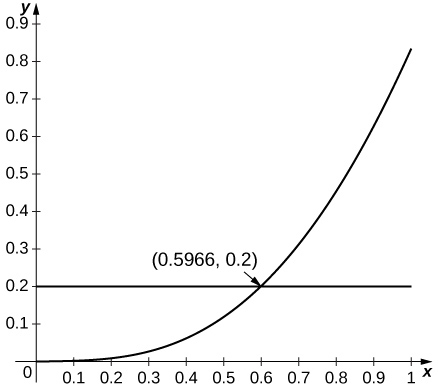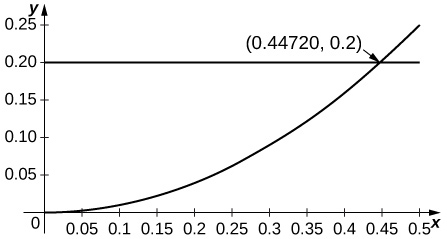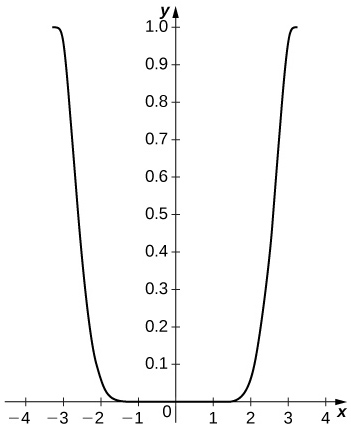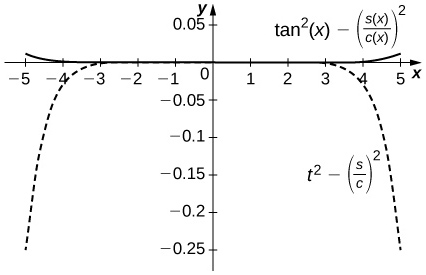2.4E: Exercises for Section 2.4
- Last updated
- Sep 11, 2021
- Save as PDF
- Page ID
- 83989
( \newcommand{\kernel}{\mathrm{null}\,}\)
Taylor Polynomials
In exercises 1 - 8, find the Taylor polynomials of degree two approximating the given function centered at the given point.
1)
2)
- Answer
3)
4)
- Answer
5)
6)
- Answer
7)
8)
- Answer
Taylor Remainder Theorem
In exercises 9 - 14, verify that the given choice of
9) [T]
10) [T]
- Answer
11) [T]
12) [T]
- Answer
- Using the estimate
13) [T]
14) [T]
- Answer
- Since
Approximating Definite Integrals Using Taylor Series
15) Integrate the approximation
16) Integrate the approximation
- Answer
More Taylor Remainder Theorem Problems
In exercises 17 - 20, find the smallest value of
17)
18)
- Answer
- Since
19)
20)
- Answer
- Since
In exercises 21 - 24, the maximum of the right-hand side of the remainder estimate
21) [T]
22) [T]
- Answer
-
Since

23) [T]
24) [T]
- Answer
-
Since the second derivative of

Taylor Series
In exercises 25 - 35, find the Taylor series of the given function centered at the indicated point.
25)
26)
- Answer
27)
28)
- Answer
- Values of derivatives are the same as for
29)
30)
- Answer
31)
32)
- Answer
- The derivatives are
33)
34)
- Answer
35)
In exercises 36 - 44, compute the Taylor series of each function around
36)
- Answer
37)
38)
- Answer
39)
40)
- Answer
41)
42)
- Answer
43)
44)
- Answer
Maclaurin Series
[T] In exercises 45 - 48, identify the value of
45)
46)
- Answer
47)
48)
- Answer
In exercises 49 - 52 use the functions
49) [T] Plot
50) [T] Plot
- Answer
-
The difference is small on the interior of the interval but approaches

51) [T] Plot
52) [T] Compare
- Answer
-
The difference is on the order of

53) [T] Plot
54) (Taylor approximations and root finding.) Recall that Newton’s method
a. If
b. Let
c. Explain why the approximate roots of
- Answer
- a. Answers will vary.
b. The following are the
c. Answers will vary.
Evaluating Limits using Taylor Series
In exercises 55 - 58, use the fact that if
55)
56)
- Answer
57)
58)
- Answer


